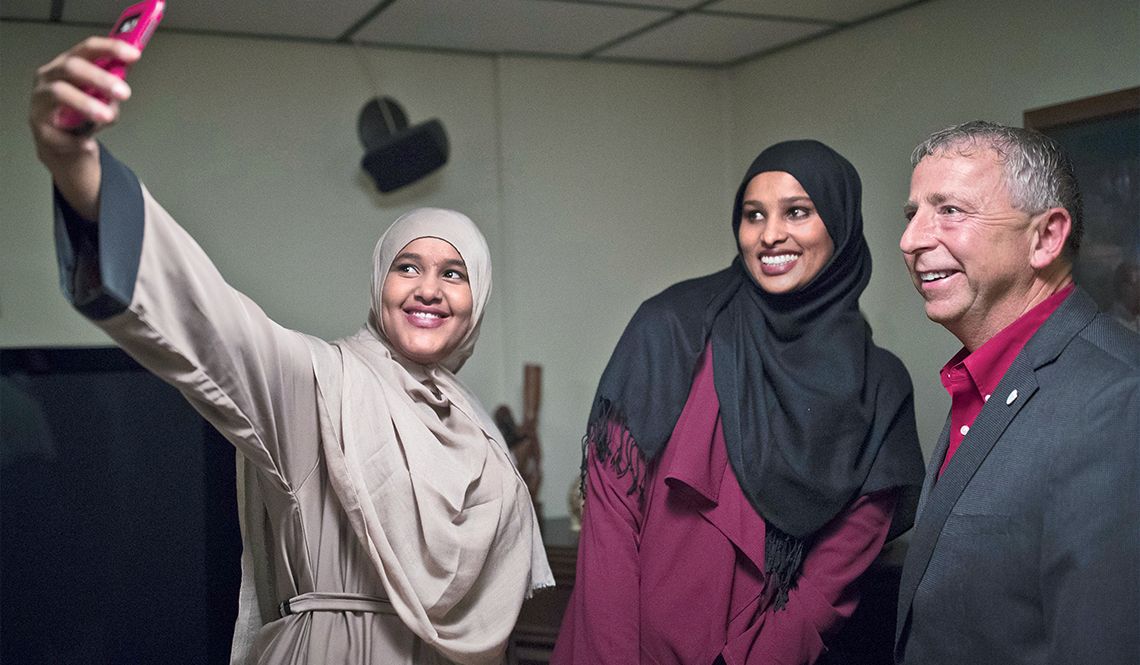Play all audios:
Dave Kleis, the mayor of St. Cloud, Minnesota, has held a town hall meeting every week since taking office in 2005. He records a weekly two-minute video message. (Check them out on Twitter.)
He hands out Neighbor of the Month certificates. (Neighbors nominate neighbors.) "IT'S SO CRITICAL TODAY WHEN LESS AND LESS PEOPLE ARE ENGAGED AND INVOLVED THAT WE FIND A WAY TO
ENGAGE AND INVOLVE. TO ME, THIS IS THE BEST WAY TO GET INPUT FROM PEOPLE. I'M GOING OUT TO LISTEN." _— St. Cloud Mayor Dave Kleis about his community outreach efforts, including
his "Mayor's Mobile Town Hall" bus, which got rolling in April 2018_ Once a month, he invites a handful of people he doesn’t know to his house for dinner. Why? “For me, it’s
invaluable to hear people’s thoughts about the city. And eating is a great way to stimulate a comfortable discussion,” he explains. The invitees come from a list of potential guests drawn
from town hall meeting participants and people who have called City Hall. Kleis cites research that finds Americans’ greatest fear is public speaking. “This shows how it’s inherently
difficult for many people to participate in public meetings,” he says. “The best way to get past that is to have a conversation.” So the mayor cooks up chili, with and without meat, and
sometimes bakes an apple pie. For his first-ever constituent supper, held in 2015, Kleis invited a barber, a nursing student, a football player from St. Cloud State University and a
psychologist. “I try to reach out to people who have less influence in the city,” he explains. “Dinners like this prove this can be our home,” said a guest — an immigrant from Sudan — after
attending a 2017 dinner party at the home of St. Cloud Mayor Dave Kleis (shown posing for a selfie with two other guests, both refugees). Later that year, the City Council rejected, by a 6
to 1 vote, a measure to end refugee resettlements. Photo by Jerry Holt, Starr Tribune via Zuma Wire Until as recently as 1990, St. Cloud was 97percent white. A period of strong economic
growth brought ethnic diversity, and nearly three decades later almost 20 percent of the city’s 67,000 residents are people of color. More than 40 languages are spoken at home by students in
the public schools. The rapid change brought some tensions, sparking campaigns such as Create CommUNITY, which launched a citywide conversation to promote racial harmony. Other ways the
city takes the pulse of the populace is through a community-wide survey. Questions concern whether the respondent feels safe, welcome and included. In 2016, when a Somali refugee stabbed 10
people at the city’s shopping mall before being killed by police, the event made national news. Many feared that the popular shopping center would lose business. So Kleis, who holds many of
his town halls in the mall’s food court, made a point of visiting the mall and buying a suit at the Macy’s where the man had been shot. People of all races continued shopping at the mall,
and there were no anti-immigrant protests in the wake of the incident. “We’ve been building community all that time,” Kleis later told the _Star Tribune_. “You never know you’re doing
anything until a time of crisis.” _This article is an excerpt from the "Inspire Community Engagement" chapter of the AARP book Where We Live: Communities for All Ages — 100+
Inspiring Examples From America’s Community Leaders. _ _Book published June 2018 _ MORE LIVABLE COMMUNITIES INTERVIEWS

